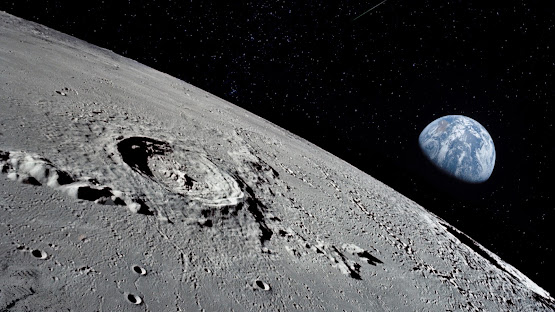Moon drifting away from Earth: How it will shape future of our planet?
The moon has been a constant companion to Earth for billion of years, serving not only as a satellite but also as a significant cultural symbol, often featured in stories, films, and myths. Many of us have grown up hearing the moon affectionately referred to as "Chanda Mama" in children's stories.
However, recent scientific research has raised concerns about the moon's relationship with our planet. According to new findings, the moon is slowly drifting away from Earth, a shift that could have far-reaching implications for the future.
A research team from the University of Wisconsin-Madison has revealed surprising data regarding the moon's slow retreat. Their studies indicate that the moon is moving away from Earth at a rate of about 3.8 centimeters per year. While this annual movement may seem insignificant, over extended periods, it could lead to major changes on Earth, including an increase in the length of a day. The research suggests that in around 200 million years, a day on Earth could extend to 25 hours instead of the current 24.
A day on Earth was only 18 hours long
This gradual change has been occurring for a considerable time. For instance, about 1.4 billion years ago, a day on Earth was only 18 hours long.
The main reason for this phenomenon is related to the gravity between the Earth and the Moon and the tidal force of both the bodies. Stephen Meyers, professor of geology at the university, said, "As the Moon is moving away, the Earth's speed is slowing down."
While the concept of the moon moving away from Earth is not entirely new, the team from the University of Wisconsin-Madison has provided more concrete evidence through their analysis of meteorites and lunar samples, confirming the moon's annual distancing from Earth.
It's also important to recognize that the moon and Earth experience time differently; one day on the moon equates to 14 days on Earth. Additionally, the moon's temperatures vary dramatically, with daytime highs exceeding 100 degrees Celsius, while nighttime temperatures in shadowed regions, such as the South Pole, can drop to minus 200 degrees Celsius.
This ongoing shift in the moon's position relative to Earth serves as a reminder of the dynamic nature of our universe. While the moon's slow departure may not have immediate effects, over millions of years, these changes will fundamentally shape the future of our planet.




Comments
Post a Comment